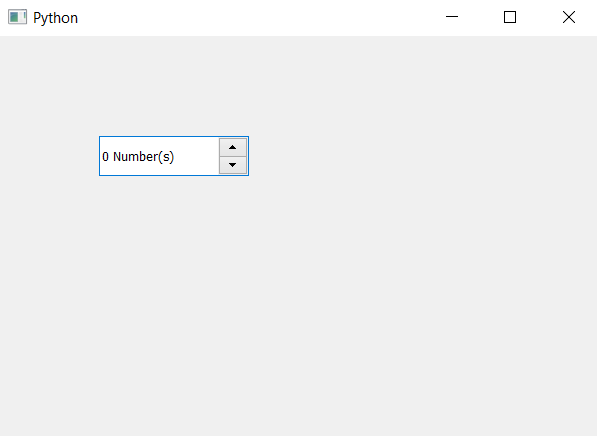En este artículo veremos cómo podemos establecer el sufijo en el cuadro de número, el sufijo es el texto adicional que se agrega al final del valor, no es editable y es permanente. De forma predeterminada, no hay un sufijo establecido en el cuadro de número, aunque podemos establecer el sufijo en cualquier momento.
Para ello utilizaremos el setSuffixmétodo
Sintaxis: spin_box.setSuffix(texto)
Argumento: toma una string como argumento
Retorno : Devuelve Ninguno
A continuación se muestra la implementación.
# importing libraries
from PyQt5.QtWidgets import *
from PyQt5 import QtCore, QtGui
from PyQt5.QtGui import *
from PyQt5.QtCore import *
import sys
class Window(QMainWindow):
def __init__(self):
super().__init__()
# setting title
self.setWindowTitle("Python ")
# setting geometry
self.setGeometry(100, 100, 600, 400)
# calling method
self.UiComponents()
# showing all the widgets
self.show()
# method for widgets
def UiComponents(self):
# creating spin box
self.spin = QSpinBox(self)
# setting geometry to spin box
self.spin.setGeometry(100, 100, 150, 40)
# setting step type
self.spin.setSuffix(" Number(s)")
# create pyqt5 app
App = QApplication(sys.argv)
# create the instance of our Window
window = Window()
# start the app
sys.exit(App.exec())
Producción :
Publicación traducida automáticamente
Artículo escrito por rakshitarora y traducido por Barcelona Geeks. The original can be accessed here. Licence: CCBY-SA